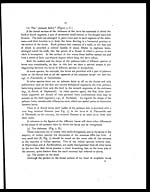Medicine - Institutions > Army health reports and medical documents > Scientific memoirs by officers of the Medical and Sanitary Departments of the Government of India > Number 2 - Malaria in India > Part I > Methods of investigation
(34) Page 26
Download files
Individual page:
Thumbnail gallery: Grid view | List view

26
is formed by dots of pigment only, and is therefore liable to considerable varia-
tion, yet in some species the head pattern is sufficiently constant to be of
assistance in the identification of larvæ. The inverted triangular area enclosing
four dots of pigment on the dorsal surface of the head of the larva of A. Rossii,
for example, is fairly characteristic, as is also the complete absence of any
pattern on the head of A. Stephensii larvæ. The usual markings on the heads
of these and other larvæ are given in the diagrams.
The above are the chief characteristics by which we have differentiated the
larvæ of the Indian species of anopheles. Further work would doubtless show
that other structures might be used for the same purpose, such for example as
the spines on the maxillæ or the varying length of the caudal papillæ. It
would also be interesting to discover the characters which distinguish the male
and female larvæ from each other if in this stage of the mosquito's existence
any marked difference exists.
Set display mode to: Large image | Zoom image | Transcription
Images and transcriptions on this page, including medium image downloads, may be used under the Creative Commons Attribution 4.0 International Licence unless otherwise stated. ![]()
| Permanent URL | https://digital.nls.uk/75022454 |
|---|
| Shelfmark | IP/QB.10 |
|---|---|
| Additional NLS resources: | |




